
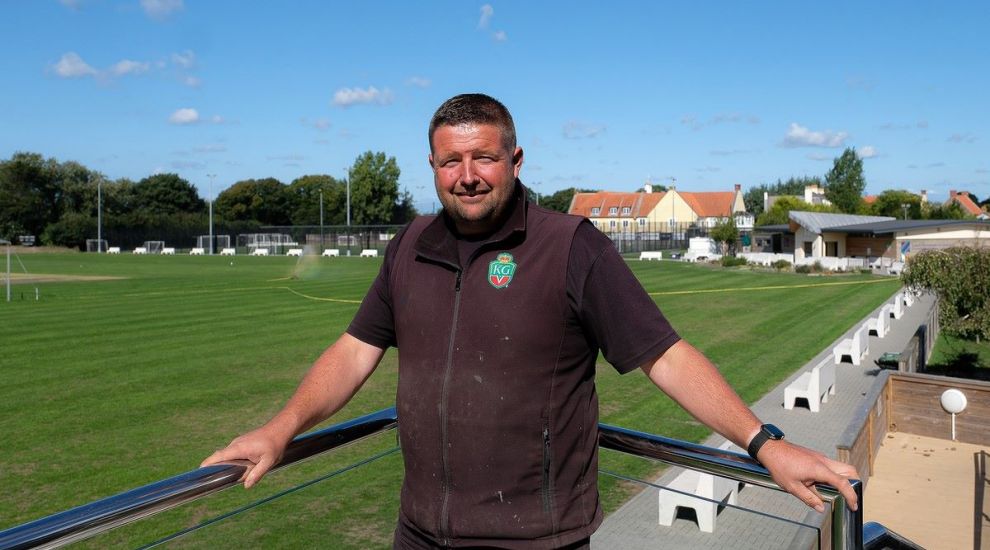

Stuart Le Prevost was working in the warehouse at Specsavers when a life-changing opportunity came along to make a living in the game which had always been his greatest passion – cricket.
That was 15 years ago. Stuart says that every day since then his far from ordinary day job "has felt more like a hobby than going to work".
"I started for the Guernsey Cricket Board in 2007. I was Guernsey cricket captain at the time," says Stuart.
Guernsey cricket was taking its first steps on the international scene and there was money available to develop facilities. Stuart became an assistant groundsman at the King George V Playing Fields, working under the late Alan Hamilton, and during the quieter winter months also coached cricket for up to 20 hours a week.
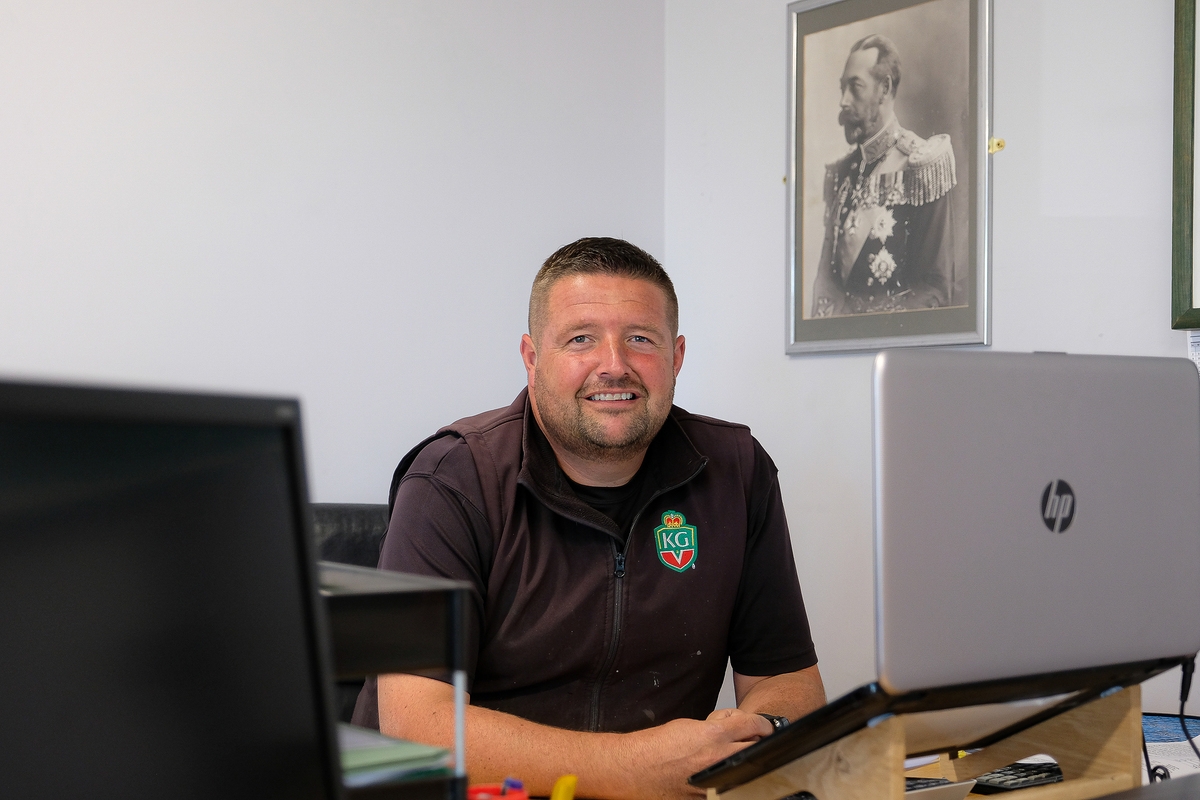
Pictured: Stuart Le Prevost overlooked by King George V, in whose memory the playing fields were established in 1935.
"I enjoyed my job at Specsavers, but cricket has been my passion since day dot," says Stuart. "As soon as this job came up, and with me being island captain, it suited them that they could have me at their disposal to play in tournaments, and I got to work in the game I love. I didn't take much persuasion."
Today, Stuart leads a small team of groundsmen, but as part of a wider role managing facilities at the KGV following extensive development which has made it one of the island's premier sports and community venues.
"A couple of years after I joined, this place started to be developed. The KGV is owned by a trust which is chaired by the Bailiff of the day. When Sir Geoffrey Rowland was Bailiff, he saw that the KGV needed investment. At that time, Stuart Falla was chairing the Sports Commission, and the Bailiff asked him to take the KGV under his wing.
"Without Stuart's vision and commitment, the development of the KGV would never have happened. He's a great guy. One minute he'll be in the shed talking to me and the next minute upstairs with a sponsor persuading them to support us to keep going and keep improving. He's done a fantastic job for the love of it.
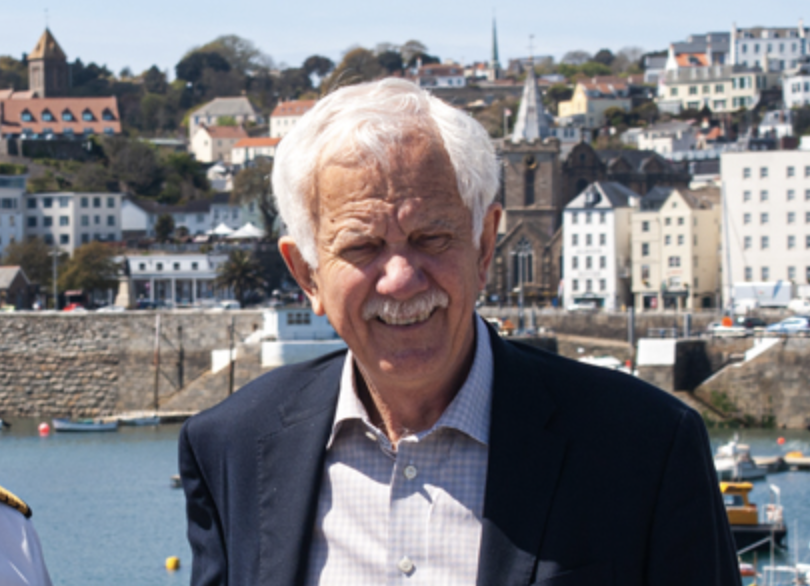
Pictured: Stuart Falla has led the transformation of the KGV into one of the island's premier sports and community venues. File picture.
"This is a not-for-profit operation. Every penny we make goes back into the place. There are no directors making money out of this. It's a community facility."
In the era of the two Stuarts, the KGV has installed the island's only third generation (3G) all-weather pitch, which is floodlit and large enough to host senior level football and rugby. The old clubhouse has been redeveloped into a sports bar and suite of offices and meeting rooms housing numerous charities and corporate and community events. And the Dorothy Langlois Nature Trail now provides a one-kilometre tranquil walk around the perimeter of the grounds.
It's easy to see why the role of looking after the grounds has expanded.
"I love my job. I love coming in every day. We have a great team and I love working with them. Yes, we can work long hours, including weekends and evenings, and my phone is always on. Being in the position I am, if there's a problem with the 3G pitch or an alarm goes off overnight, I'll probably get a call.
"But there's nothing I'd rather be doing than this job."
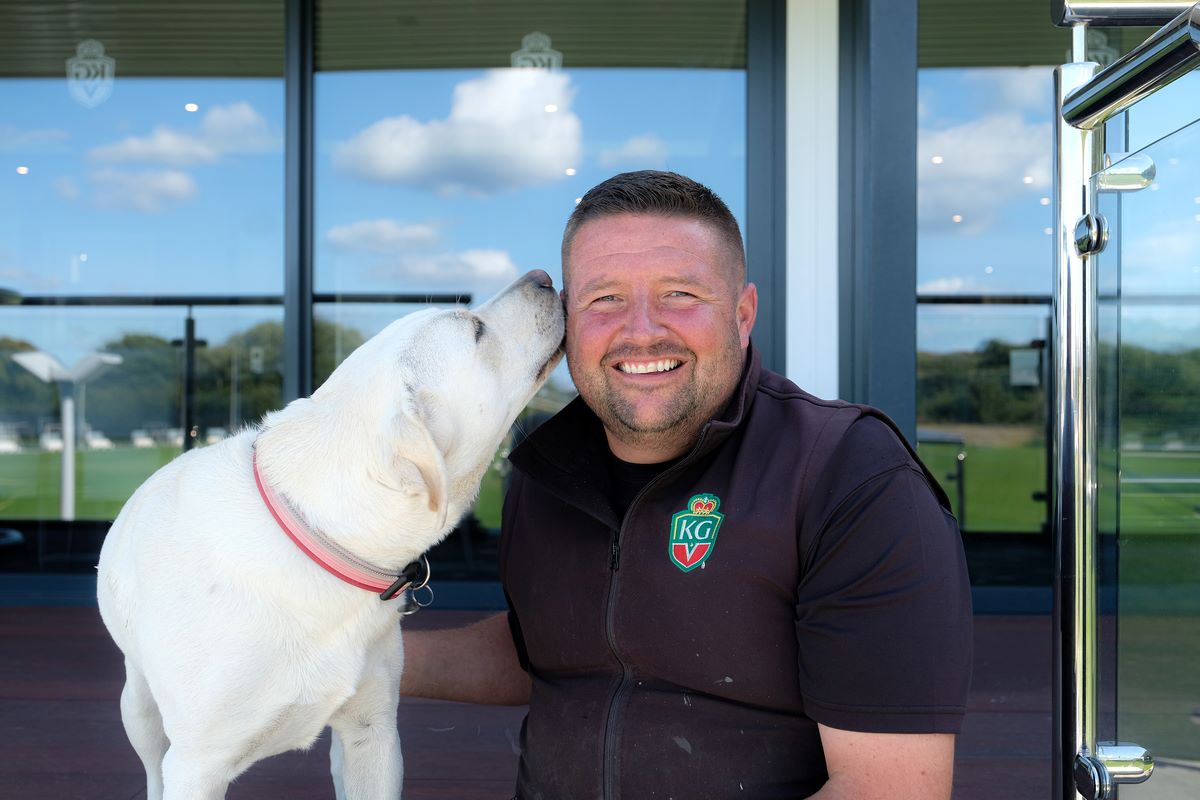
Pictured: Stuart Le Prevost's Retriever is seldom far behind his owner at the KGV.
Stuart says installing the 3G pitch was – excuse the pun – a game changer: a platform for everything that has happened since.
"That was the first major development and it cost the best part of £1million with the floodlights and foundation work. Some very generous people loaned or gifted us money to put in the 3G.
"That enabled us to create more income and, crucially, year-round income because it can be used all winter in practically any conditions. The 3G pitch caters for everything from kids' parties to Rangers' minis [primary school-age football] to senior football and walking football – there was a guy of 92 playing here the other day."
Initially, the 3G pitch was not without its detractors among the grass purists and there was some resistance to its use for serious sport. Sense prevailed, mostly.
"We always said that it's not a replacement for grass. But it's a decent alternative if grass is unavailable or in a poor condition or drowning in the winter. What would you rather – spend two or three months in the winter not playing at all or use the 3G and keep playing throughout your season?"
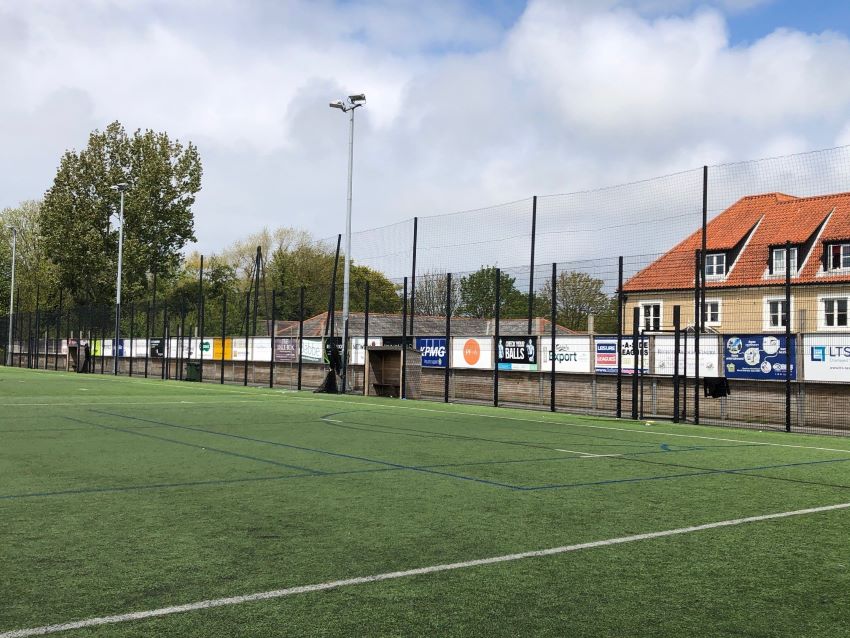
Pictured: Developments at the KGV over the past few years include the island's only 3G pitch. Credit: KGV.
Although Josh Butler is now head groundsman, overseeing and constantly improving the grass pitches – for cricket and volleyball in the summer and football in the winter – remains Stuart's greatest interest.
"Out there," says Stuart, looking towards the grass pitches, "that's still my passion. I’ve been lucky enough to play cricket in a lot of places around the world. When you turn up to a ground, first impressions are hugely important. If you turn up to a ground and the outfield is cut in stripes and it looks the part, it makes you feel better straight away, and you think 'I fancy scoring a few runs here' or 'I fancy a good day in the field'."
Today, there are few sports venues in Guernsey, if any, which create a better first impression than the KGV. The better-known Stuart, Falla, has undoubtedly provided the vision and drive, but much of the immaculate presentation of the ground, its sense of community and the plaudits won by its pitches and other facilities are down to the hard work every day of Stuart Le Prevost and his team.

Pictured: The sports pitches host primarily cricket and football. Indoors, behind the Legends' Terrace, the KGV hosts numerous third sector organisations in a refurbished suite of rooms and offices.
We speak just as they are completing preparations for cricket to give way to football.
"It's not always easy to get the same piece of grass right for use by all sports which want to use it. In the cricket season, we're cutting our outfield at 13, 14, 15 millimetres, so the outfield is short and smooth and the cricket ball travels across it without bobbling. We cut it maybe three or four times a week – two-and-a-half hours a time. As you're cutting, you're sort of rolling it as well, and by the end of the cricket season and start of the football season it can look like a carpet.
"The other end of the season can sometimes be problematic if you come out of the winter with a soggy February or March and you've got a fixtures backlog with football matches having been postponed. We get maybe three weeks to prepare the pitch for cricket.
"Generally, it requires raking with a big grass rake, which we pull behind a tractor and which pulls out any organic matter, any thatch, any lateral growing grass, and makes everything stand up and cleans out the surface. We'll generally over-seed because football takes its toll on the grass. We try to do as much verti draining as we can [inserting tines into the surface to break up soil compaction]. Not so much for the water to get down – obviously that helps – but it's to get air into the grass. It lets the roots spiral down the holes and creates a better sub-surface. The better the roots system you've got, the quicker the pitch will recover.
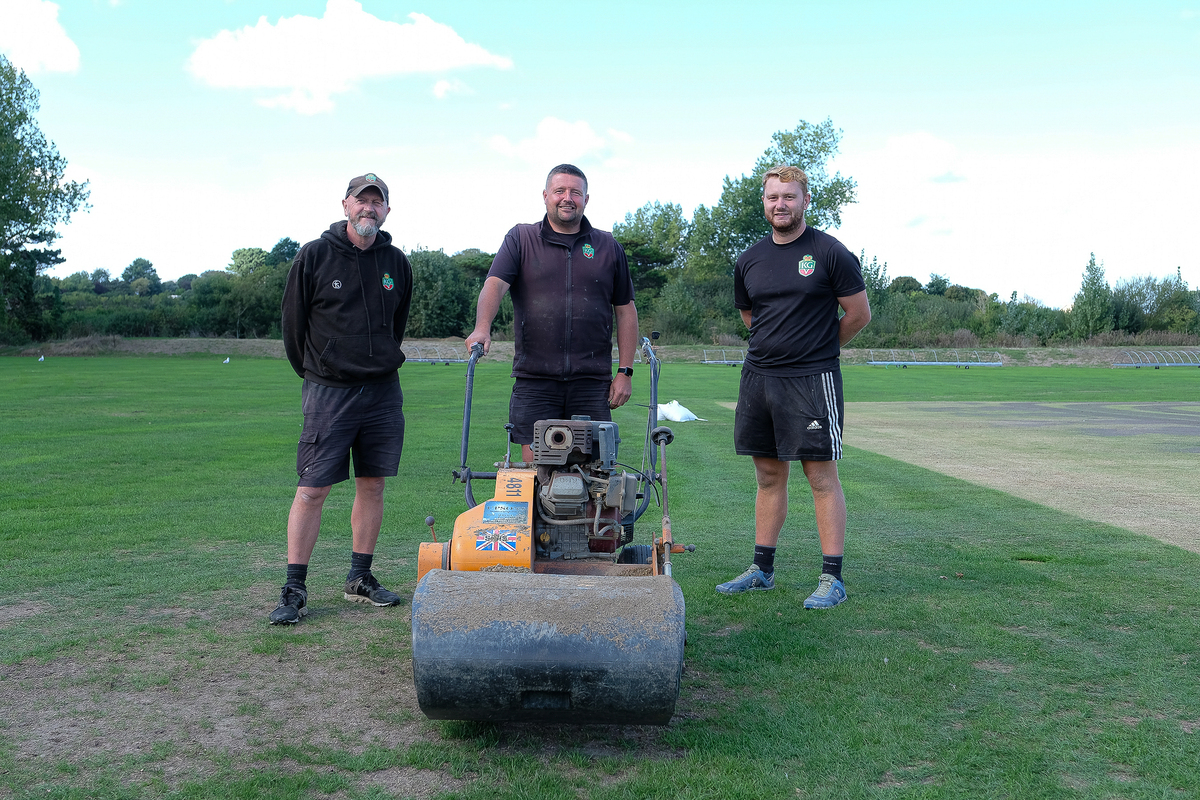
Pictured: Stuart and his grounds staff colleagues.
"There’s obviously a cycle to our work which is similar every year.
"In the winter, if it's cold, sometimes it's nice to be in the shed. There's equipment which needs maintenance and painting – we do that type of job over the winter.
"In the summer, I try to work outside as much as I can. April and May are mad for us because of the growth. There's dampness in the soil from the winter rain and then the temperature shoots up and everything grows like mad.
"If we could have all our cricket matches in May, the ground would always look fantastic. They have the island golf championships in May and I always think someone had the idea right there – the course always looks superb.
"It’s about having the time, the equipment and the conditions. One of the things my old boss used to say to me was that if you're going to do a job make sure the conditions are right.
"When I started here, I was so enthusiastic and just wanted to get out on the pitch. I'd say I want to cut it and he'd tell me it was too wet. I'd go and do it anyway and then get the tractor stuck. If you do things in the wrong conditions, you can do a lot of damage, but I've learned from a good few mistakes over the years."

Pictured: Stuart is now one of the island's most experienced and respected groundsmen.
Stuart speaks fondly of the small community of groundsmen locally – peers such as Phil Roussel at Elizabeth College, Shane Moon at Foote's Lane, Nick Russell, a professional turf specialist, and Marcus Hamon, formerly of the links course at L'Ancresse, who he says "are always there to bounce ideas off".
These days, all of them face an additional challenge: there has been a vast improvement in the quality of pitches which sports fans see on television, raising expectations.
"When you look at matches when the Premier League started [1992/93], at the end of the season there was hardly a blade of grass on the pitch. If you took a Premier League pitch now and took two photos, one on the first day of the season and one on the last day, you wouldn't know which was which. That's through huge investment in equipment and improving knowledge. It's now a science.
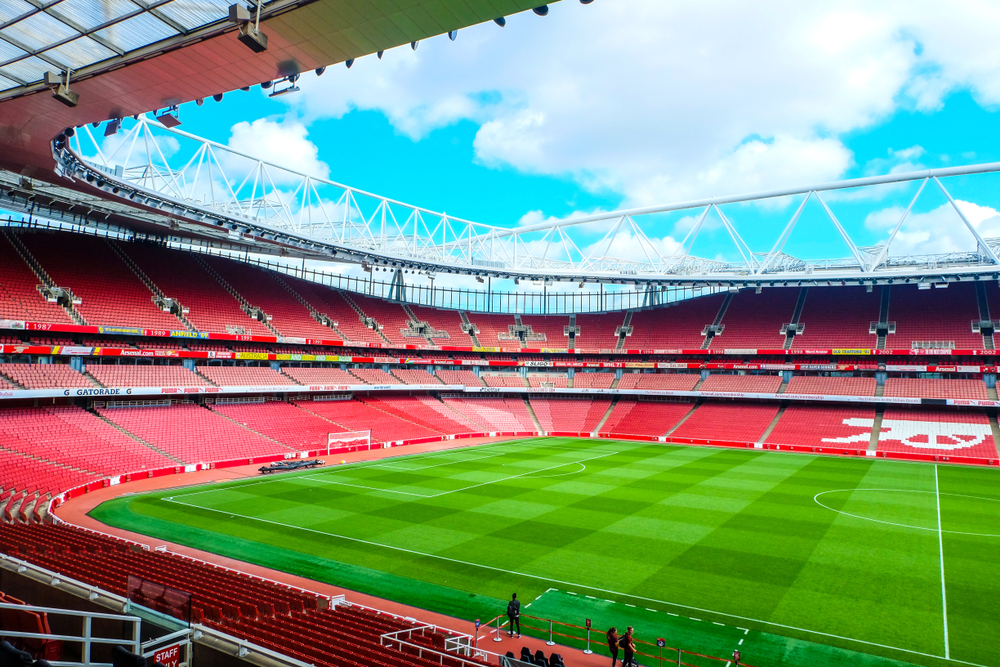
Pictured: In professional football, immaculate pitches - such as this one at Arsenal's Emirates Stadium - have set a new standard.
"Our pitches in Guernsey are basically fields. Foote's Lane was pretty much purpose laid but generally all the others are fields. That's why we struggle in the depths of winter with waterlogged pitches.
"These days, because people see pristine pitches on TV, they don't want to play on a pitch with a bit of mud on it, but the Premier League is a different world. I remember going to watch Vale Rec. in the late 1980s – a great team but they were playing on a mud bath. Our pitches have also improved quite a lot over the years.
"Improving facilities costs money. A lot of sportspeople don't like spending money to play sport. They don't mind spending £150 on a night out in Town, but if you ask them to pay a fiver to play football they're not so keen. Things would need to change in that respect to get better and better facilities."
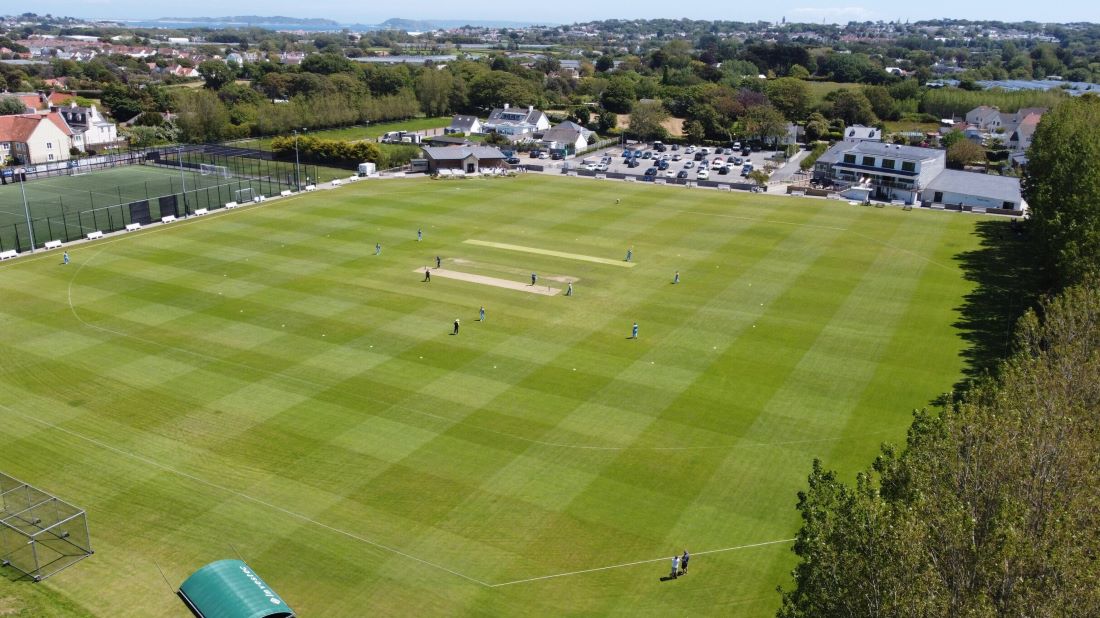
Pictured: The grass pitch at the KGV hosts a cricket match with the 3G pitch and clubhouse facilities in the background. Credit: KGV.
I ask Stuart what he would do to improve his pitches if money was unlimited. Levelling, irrigation and drainage, he says.
"We would completely level the field to make it flat. There's a drop of eight feet from one corner to another on this [main] pitch. You're not going to bring up one corner eight feet or drop the other corner eight feet, but you'd plough it up, make it level, and install irrigation.
"There is some drainage in here, but it goes back to the early 1980s, so it's a little bit old and silted up. In the summer, when it gets dry, you can see the herringbone system they put in. It works, but we get to a point where the water backs up and there’s nowhere for it to go."
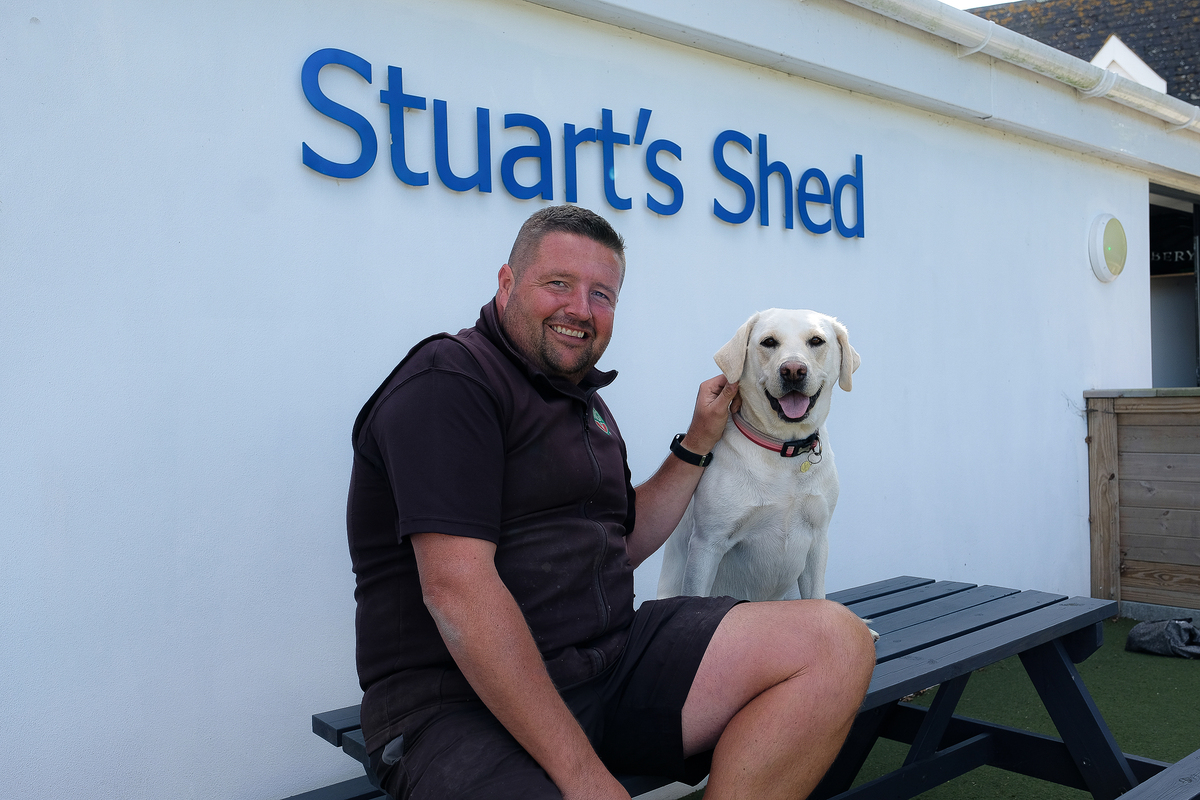
Pictured: Stuart outside his 'shed', the hub of the grounds team at the KGV.
Transformation has become an overused word. But it describes well what has happened at the KGV over the past decade.
In one corner of the ground, there is a sign which reads 'Stuart's Shed'. That is typical of Stuart's understatement.
Throughout our interview, he is much quicker to praise others than take any credit himself and he repeatedly emphasises the work of his team.
But it's clear that he has been key to the transformation of this grand old venue.
This interview was first published in the current edition of CONNECT magazine, Express' sister publication.
The online version of CONNECT magazine can be read HERE.
Picture credit (unless otherwise noted): Paul Chambers
FOCUS: A Life in Light and Darkness
FOCUS: Work-life balance is next challenge for PR expert
Comments
Comments on this story express the views of the commentator only, not Bailiwick Publishing. We are unable to guarantee the accuracy of any of those comments.